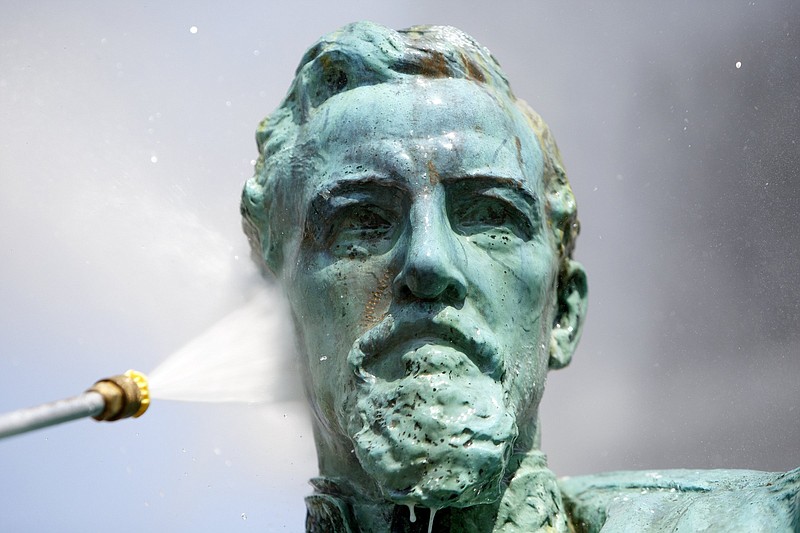The mob is coming for Lt. Gen. Alexander P. Stewart.
The mob is coming for the bust of Stewart outside a little used, locked entrance of the Hamilton County Courthouse to exact its pound of flesh. It's coming because the bust of the onetime Confederate soldier is convenient. It's coming because the mob needs to say it Did Something.
Today, the Hamilton County Commission is expected to vote on a resolution to remove and relocate the bust of Stewart, pending the Tennessee Historical Commission's seeking of a waiver to state law. Three years ago, the county commission voted 6-2 against removing the bust. The commission has a slightly different makeup now, but we hope reason will prevail again.
Indeed, the commission has the opportunity to embrace history - to tell the world that the bust on its grounds is there because the man it depicts was a peacemaker. How many towns in the South can say that? Ours can, and should.
Stewart's story has been told in the history column in the Sunday Perspective section of this newspaper and on this editorial page. But who reads history when you just want to score a point? Not the mob, certainly. And who reads editorials, not when social media can give you all the opinion you need?
But here is the truth once again.
The bust of Stewart stands on the courthouse grounds because in the 1890s and early 1900s he oversaw creation of a Chickamauga and Chattanooga national military park. And that park was created because veterans of the North and South came together at an 1889 picnic of sorts - it was called the Blue and Gray BBQ - and wanted to put aside their differences, not forgetting what happened in the Civil War but desiring to tell the story of the campaign while giving equal attention to Union and Confederate sides.
The park - our park - became the nation's first official military park, five years before Gettysburg and 26 years before the establishment of the National Park System.
We were first, and now the mob wants the man who helped make that first a reality to be banished.
The mob, if it were thoughtful, might wonder why this city of Civil War history isn't replete with statues of Confederacy President Jefferson Davis, of Gens. Robert E. Lee, Stonewall Jackson, James Longstreet or J.E.B. Stuart, or of a memorial depicting "Our Brave Boys Who Fought So Valiantly In The War Of Northern Aggression."
The statues aren't here because that's not who we are, or ever were.
The mob, if it studied history, would have learned the town on the banks of the Tennessee River and its environs were of two minds over the war. Chattanooga itself, inhabited largely by Democrats then as now, favored the South. Hamilton County, inhabited largely by Republicans then as now, favored the North.
Chattanoogans voted that Tennessee should join the Confederacy; Hamilton Countians voted to stay with the Union. Tennessee, as we know, became a Confederate state.
Stewart, who did not live in Chattanooga at the time, did not own slaves, opposed slavery and opposed secession, nevertheless took up arms for his state. After the war, he first became an insurance executive and then went into higher education.
When the battlefield was established, co-commissioners were appointed, one from the Confederacy and one from the Union. You know, just to be fair - something many people don't think is very important today.
Stewart, the Confederate commissioner, was available, moved here and supervised the work creating the park. It wasn't easy, according to Timothy B. Smith in his book "A Chickamauga Memorial: The Establishment of America's First Civil War National Military Park." Commissioners, he said, had to deal with issues from land acquisition, to road construction, to the placement of monuments and markers.
But what we have today, an area of conservation, of recreation and of history, is in part thanks to his early supervision.
Yes, the Daughters of the Confederacy commissioned his bust in 1916, but they happened to live here. It's not likely there were many members of the Daughters of Union Veterans here to co-commission the bust with them.
Today, Hamilton County Commission members can say with their vote that they choose to celebrate a peacemaker, not denigrate one. They can say that a peacemaker like Stewart - and what he did to make the dream of those who attended the 1889 barbecue that inspired the military park come true - ought to be held up as virtuous and ought to be an example for us today. No, not for what he did in the war, but for what he did for peace.
